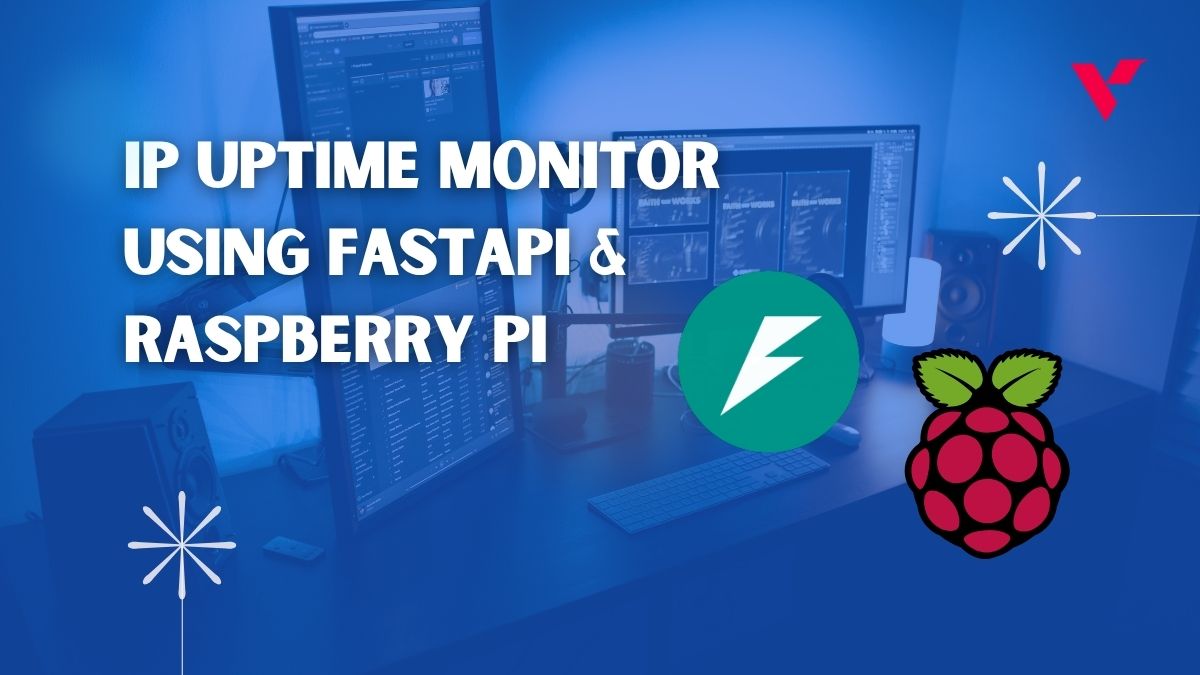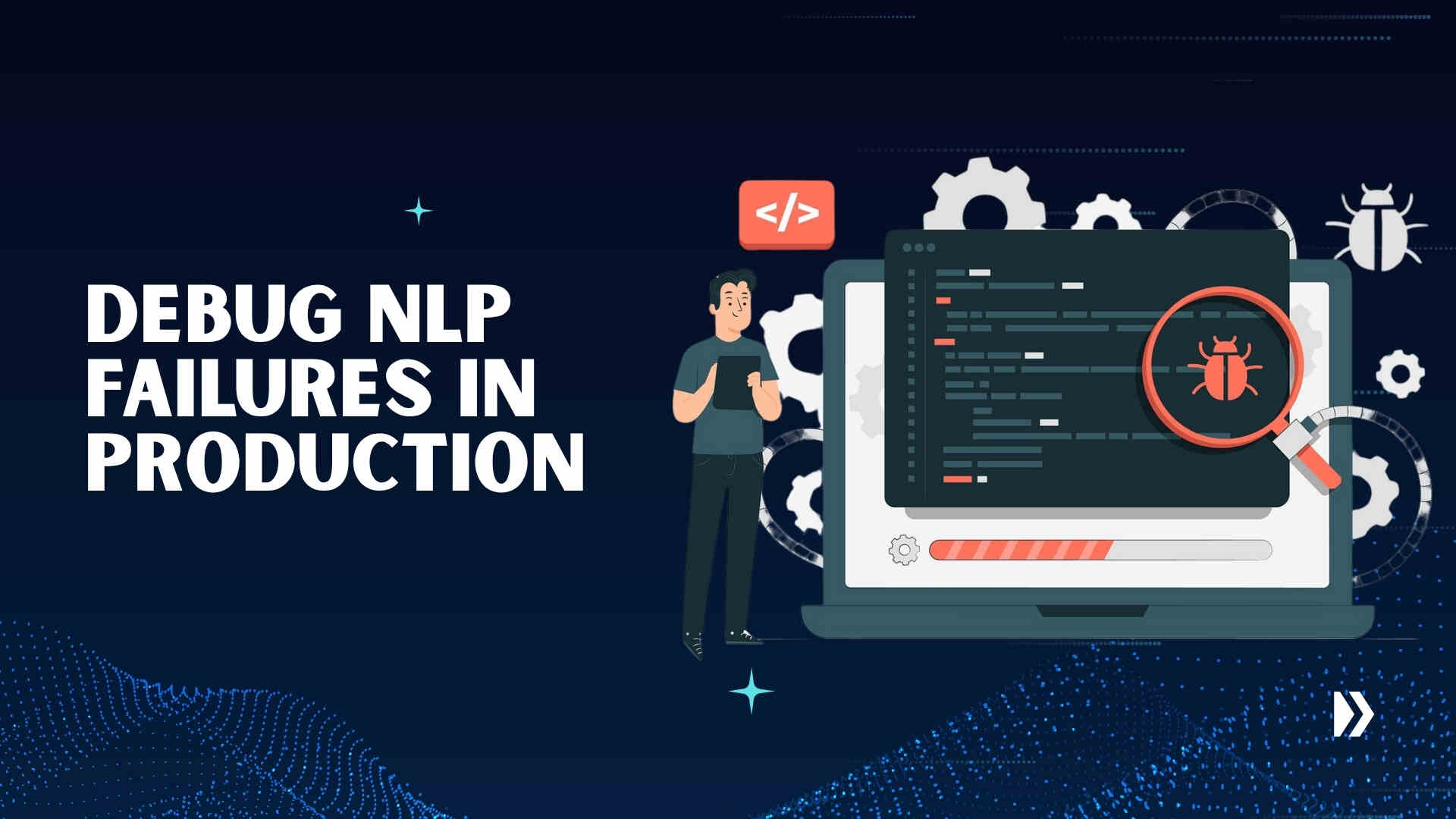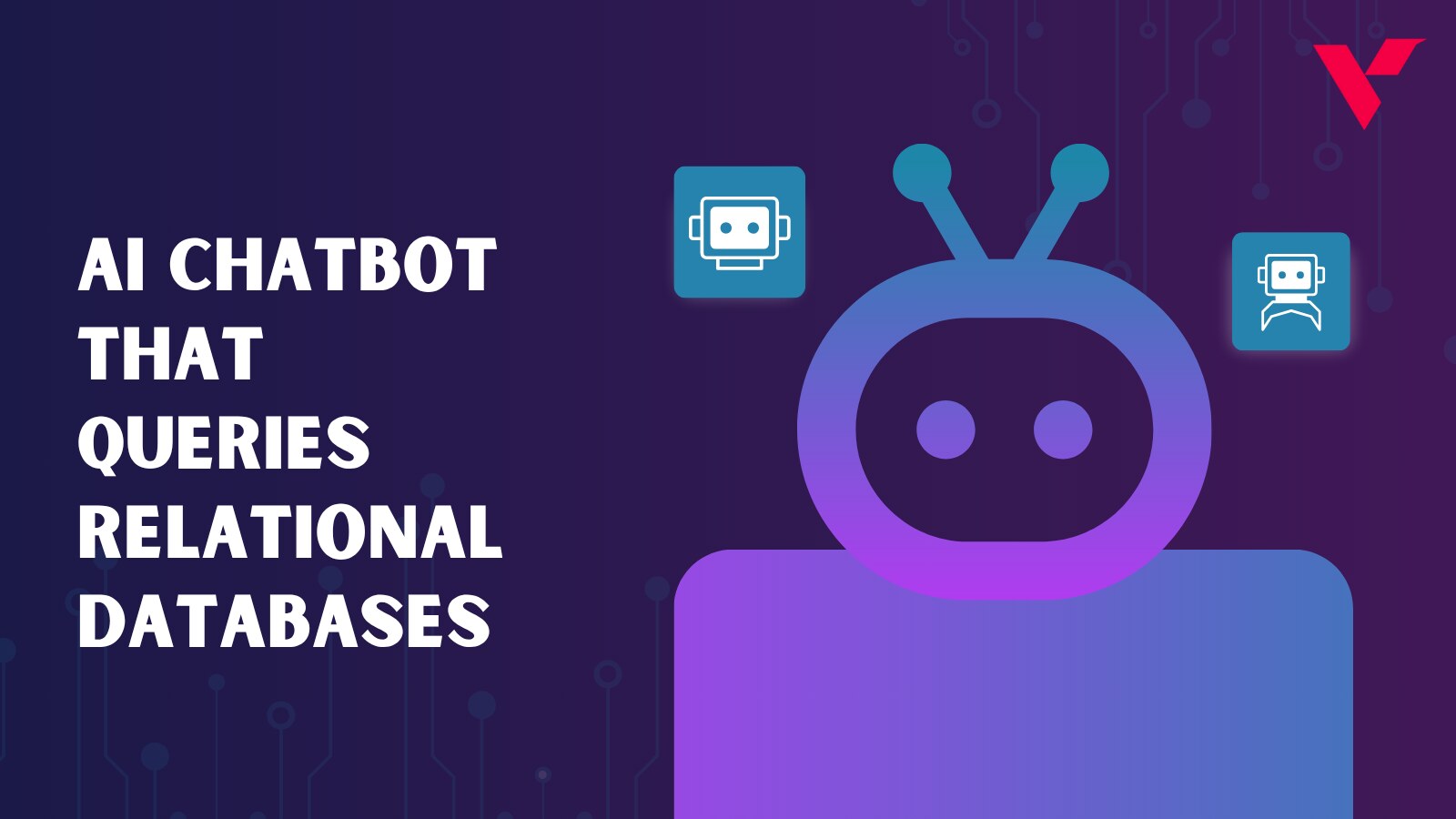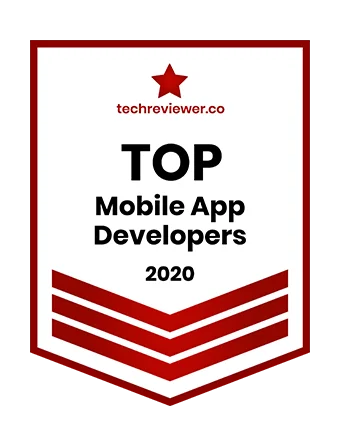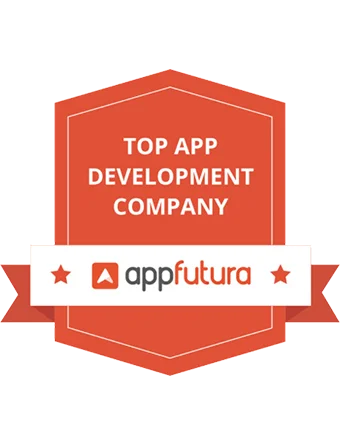Content management systems (CMS) have rapidly evolved, and headless CMS platforms are now at the forefront of modern digital experiences. Businesses no longer want to be constrained by traditional monolithic CMS systems when delivering content across multiple platforms, such as websites, mobile apps, smart devices, and digital kiosks.
Among the most used headless CMS, the most prominent are Strapi and Directus. Both offer flexibility, scalability, and developer-friendly tooling — but they cater to slightly different audiences and project requirements. We’ll explore the core features, differences, performance benchmarks, and ideal use cases for Strapi and Directus. Whether you’re a developer, CTO, startup founder, or content manager, this guide will help you decide which platform fits your needs.
Table of Contents
What is a Headless CMS?

A headless CMS is a content management system that separates the backend (content repository and business logic) from the frontend (presentation layer). Unlike traditional CMS platforms like WordPress or Drupal, where the content and UI are tightly coupled, a headless CMS allows content to be delivered via APIs to any device or frontend framework—be it a NextJS based website, a ReactJS-based enterprise application, an Android app, or a smart fridge screen.
Benefits of headless architecture:
- Omnichannel content delivery (web, mobile, wearables, etc.)
- Front-end freedom (use any framework like ReactJS, Vue, Angular)
- Better scalability and performance
- Improved developer experience
Traditional CMS vs Headless CMS:
| Traditional CMS | Headless CMS | |
| Coupling | Tightly coupled | Decoupled |
| Flexibility | Limited to built-in themes | Any frontend framework |
| API-First | Not always | Yes |
| Omnichannel Support | Limited | Full support |
| Developer-Friendliness | Less | High |
Strapi Headless CMS
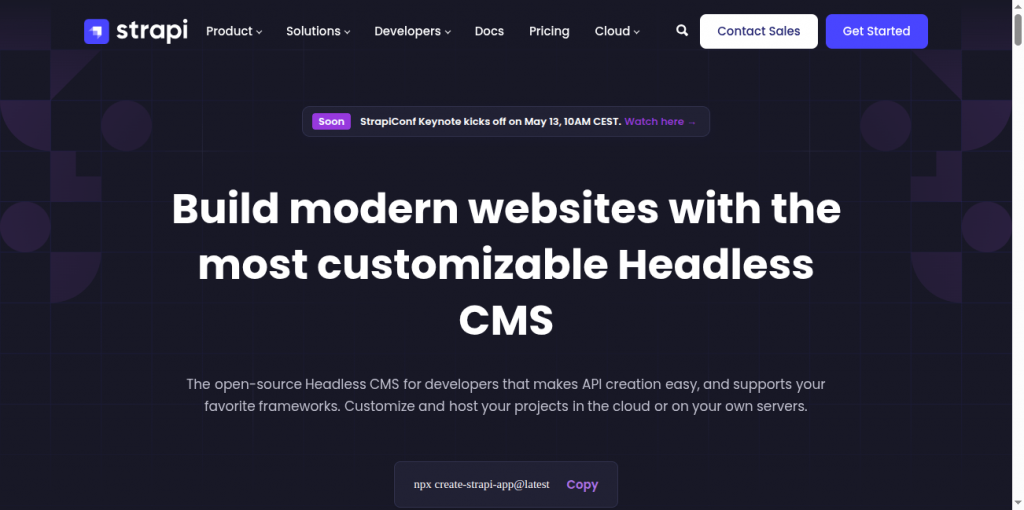
Strapi is an open-source, JavaScript-based headless CMS built on NodeJS. It is designed with flexibility and customization at its core, offering developers complete control over the backend logic, data models, and API generation. Since Strapi is built on NodeJS, a solid understanding of NodeJS Development can significantly enhance your ability to customize and extend its functionalities.
Key highlights:
- Built on NodeJS: Fully JavaScript from end to end.
- REST & GraphQL APIs: Automatically generated APIs for faster development.
- Customizable admin panel: Tailor the UI to your needs.
- Customizable APIs: Fully customizable APIs, routes, and plugins to fit specific needs.
- Internationalization (i18n): Manage content in multiple languages.
- Self-hosted: Deploy Strapi on your server like AWS, Render, Digital ocean.
- Cloud-hosted: Also allows quick deployment on Strapi cloud.
- Plugin system: Extend functionality with community or custom plugins.
- Authentication & permissions: Fine-grained user access control built-in.
- Databases Supported: PostgreSQL, MySQL, MariaDB, SQLite
- Adoption & Community: Over 50 Million downloads, 66K+ github stars and 72K+ active developers and over 600 contributors
Strapi is popular among developers who need to build custom content structures and APIs quickly without being boxed into predefined templates, while having the complete control and flexibility to customize. This level of flexibility makes it a strong choice for projects that require tailored architectures, often seen in advanced Strapi Headless CMS Development workflows.
Directus Headless CMS
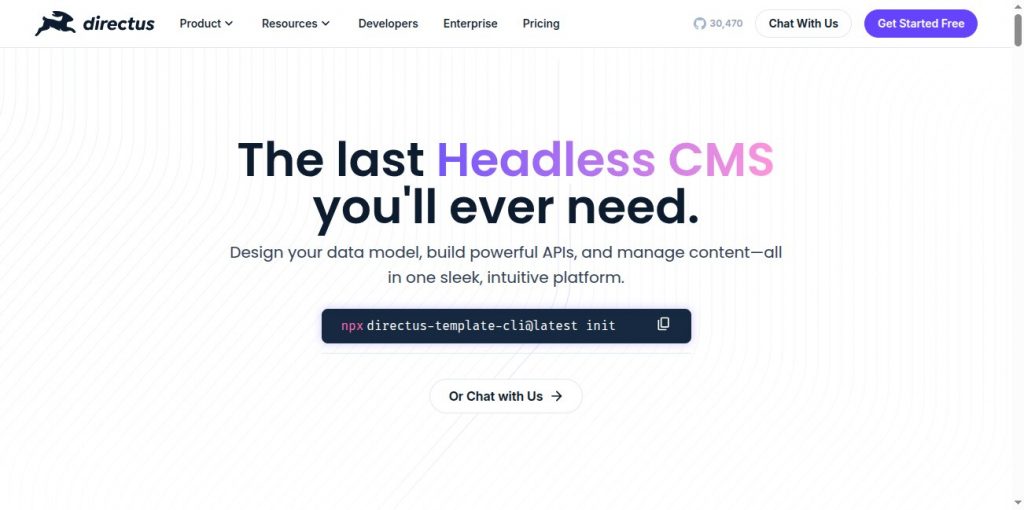
Directus brands itself as an “open data platform,” not just a headless CMS. It’s a versatile tool that wraps around any SQL database, giving users an intuitive admin interface while allowing developers to work directly with raw data structures. This direct access to data models and granular control makes Directus particularly well-suited for complex backend development scenarios involving custom workflows and data logic.
Key highlights:
- Database-first approach: Works with existing SQL databases like PostgreSQL, MySQL, SQLite, OracleDB, CockroachDB, MariaDB, MS-SQL.
- Adoption & Community: Over 38 Million docker downloads, 30K+ github stars, 55K monthly npm downloads and over 15K community members
- No code / low code: Easy for content editors and non-developers to use.
- REST & GraphQL APIs: Automatically exposes database tables as endpoints.
- Highly customizable roles & permissions: Enterprise-grade access control.
- Deploy anywhere: On-premise, self-hosted, or via Directus Cloud.
- Data modeling flexibility: Define relationships, enums, field types with precision.
- Customizable: allows development of custom extension to extend functionalities
- Dashboards: Allows creation of dynamic dashboard without any code, using visual interface.
Directus is often favored in data-centric applications, especially where SQL databases already exist and business logic needs to integrate tightly with content workflows. While both Headless CMS support extensibility, Directus enables custom API development by exposing your existing SQL schema as a real-time API, which can be tailored further through hooks, endpoints, and flows.
Strapi vs Directus: Key Feature Comparison
Let’s look at a head-to-head feature breakdown:
| Strapi | Directus | |
| Language | JavaScript/NodeJS | JavaScript/NodeJS |
| Database Support | MongoDB, PostgreSQL, MySQL, SQLite | PostgreSQL, MySQL, SQLite, OracleDB, CockroachDB, MariaDB, MS-SQL |
| API Types | REST & GraphQL | REST & GraphQL |
| Admin UI | Customizable | Intuitive & fully-featured and flexible |
| Dashboards | No | Yes |
| Authentication | Role-based, JWT | Fine-grained, RBAC |
| Self-Hosting | Yes | Yes |
| Cloud Hosting | Via Strapi Cloud (beta) | Directus Cloud (enterprise ready) |
| Plugins | Yes | Yes (extensions via hooks) |
| Content Modeling | Visual builder | Schema-based or raw database mapping |
| Ideal for | Custom apps, JAMstack | Enterprise apps, SQL-first projects |
Each platform brings a distinct philosophy to headless content management. Strapi gives developers maximum flexibility with JavaScript-based customization, while Directus empowers organizations to build interfaces on top of structured SQL data.
Developer Experience
Strapi was built by developers for developers, and this is evident from its architecture and flexibility. Developers using modern JavaScript stacks like NodeJS, ReactJS, or Vue will feel right at home.
Strapi also supports programmatic configuration and is particularly well-suited for JAMstack development. You can define roles, authentication logic, middleware, and validations without touching a GUI.
Directus offers a zero-code and low-code development experience. You can spin up a fully functional instance with Docker, use the GUI to define your schema (or import an existing one), and expose data over REST or GraphQL instantly.
Directus may be slightly less appealing to JavaScript purists because it relies heavily on SQL, but for data-driven projects, it’s a powerhouse. Both Strapi and Directus are backend-focused, but their API-driven nature makes them ideal for decoupled architectures where frontend development is handled independently using frameworks like React, Vue, or Angular.
| Strapi | Directus | |
| API Generation | Auto-generated APIs: REST and GraphQL APIs are instantly available once a content model is created. | Schema auto-detection: It can wrap around an existing SQL database without requiring migration or refactoring. |
| Plugin Ecosystem | Custom plugins: Developers can easily extend core functionality or tap into a growing ecosystem of plugins. | Webhooks, flows, and automation: Out-of-the-box features for handling business logic. |
| Customization & Control | Custom controllers/services: Logic can be deeply customized using JavaScript in backend folders. | Modular architecture: Built to scale with APIs and services that plug neatly into enterprise setups. |
Content Management Experience (Admin panel)
Strapi’s admin panel is developer-configurable but also friendly for content editors. However, the admin panel leans more toward developers. Editors might need light onboarding, especially for complex content models.
Directus is designed to give content editors a first-class experience. Allows presentation of data in different views such as table/rows, kanban, calendar, etc. It also supports WYSIWYG editing, real-time data visualization, and inline relational data editing—making it perfect for large editorial teams or non-technical content managers. Since both Strapi and Directus can serve structured content via REST or GraphQL, they integrate well into full stack development workflows that span frontend frameworks and backend services.
| Strapi | Directus | |
| Content Editing | Rich text, markdown, image uploads, media libraries. | Equipped with views, dashboards, saved filters, and custom layouts. |
| Permissions & Roles | Role-based permission control. | Fully customizable per user role. |
| Publishing Workflow | Draft and publish workflows. | — |
| Multilingual Support | Internationalization (i18n) for multilingual content. | — |
| Admin Experience | — | Extremely intuitive and fast. |
Performance and Scalability
Strapi is built on NodeJS, which gives it lightweight, non-blocking I/O performance. This makes it a solid choice for high-throughput APIs. However, Strapi’s MongoDB support was deprecated after v4, so for NoSQL setups, you’ll need to look elsewhere.
Directus inherits the strengths of the SQL databases it wraps around. With the right backend (e.g., PostgreSQL), Directus can scale to enterprise-level performance. Directus performs exceptionally well in environments with high data integrity needs, such as analytics platforms, CRM systems, and data visualization dashboards. In AI-driven systems, tools like Directus can act as structured data sources for indexing and retrieval within RAG development pipelines, especially when paired with vector databases and LLMs.
| Strapi | Directus | |
| Caching & Optimization | Built-in caching via middleware. | Real-time querying optimizations with caching and indexing. |
| Scalability Infrastructure | Horizontal scaling support with Docker/Kubernetes. | Horizontal scaling via containers and microservices. |
| Third-party Integration | Integrations with Redis, CDN, and edge computing providers. | Built-in GraphQL engine that reflects schema updates instantly. |
| Enterprise Performance | Load balancing and clustering for enterprise deployments. | No ORM bottlenecks—Directus works directly with raw SQL. |
Security and Compliance
Strapi offers robust Role-Based Access Control (RBAC), customizable middleware, and supports enterprise-grade security features like SSO and audit logging. It allows developers to integrate additional compliance layers to meet GDPR, HIPAA, or other industry-specific regulations.
Directus provides fine-grained permissions down to the field level, built-in SSO, and detailed audit trails for tracking user activity. Its database-first architecture and visual permission matrix make it easy to enforce compliance standards across enterprise environments.
| Strapi | Directus | |
| Authentication & Authorization | JWT-based authentication for APIs. | RBAC with per-field permission settings. |
| Roles & Permissions | Built-in roles and permissions system. | Integration with enterprise IAM tools like OAuth2 and SAML. |
| Custom Security Features | Ability to customize middleware for rate-limiting, IP whitelisting, etc. | API keys with scoped permissions. |
| Security Principles | OWASP security principles followed in core development. | Audit trails and activity logs. |
| Compliance Support | Available plugins for audit logs, password policy enforcement, and 2FA. | Support for GDPR and HIPAA compliance. |
Project Suitability
Strapi is ideal for startups, agencies, and dev teams working with ReactJS, Vue, or NextJS where flexibility and developer control are key.
Directus is great for enterprises needing instant CMS capabilities over existing databases, complex workflows, and granular access controls for teams. Managing structured prompts, training data, or outputs becomes easier with CMS platforms like these, particularly when used as part of a generative AI development workflow requiring flexible content storage.
| Strapi | Directus | |
| eCommerce Platforms | Custom eCommerce platforms. | — |
| Websites | Developer-first websites. | — |
| Dashboards & Analytics | SaaS dashboards. | Data visualization tools. |
| Marketing Sites | Marketing sites with custom workflows. | — |
| Internal Tools | — | Internal dashboards. |
| Enterprise Solutions | — | Enterprise CMS with deep permission control, ERP/CRM frontends. |
Pricing and Licensing
Strapi is open-source under the permissive MIT license, free to use and self-host. Paid enterprise plans offer premium features like SSO, audit logs, and SLA-backed support for large-scale applications.
Directus is free and open-source under the GPLv3 license, suitable for self-hosted deployments. They also offer paid cloud and enterprise editions with advanced features, hosting, and priority support.
Strapi is open-source under the permissive MIT license, free to use and self-host. Paid enterprise plans offer premium features like SSO, audit logs, and SLA-backed support for large-scale applications.
Directus is free and open-source under the GPLv3 license, suitable for self-hosted deployments. They also offer paid cloud and enterprise editions with advanced features, hosting, and priority support.
| Strapi | Directus | |
| Open Source License | Open Source (MIT License): Self-hosted with full access to code. | Open Source (GPL): Fully-featured self-hosted version. |
| Managed Hosting | Strapi Cloud (Beta): Managed hosting with premium support, autoscaling, and security. | Directus Cloud: Scalable enterprise-grade cloud platform. |
| Enterprise Solutions | Enterprise Plans: For advanced roles, SSO, SLAs, and compliance tools. | Enterprise Tier: Premium SLA, high-availability setups, custom integrations. |
| License Flexibility | Strapi’s MIT license offers more flexibility for proprietary modifications. | Directus’ GPL license requires open-sourcing of derivative works if distributed—important for commercial products. |
Community and Ecosystem
Strapi has an active developer community, documentation quality, and plugin availability can significantly influence your experience with a CMS. Strapi has a solid commercial backing, regular updates, and a community that quickly produces tutorials, plugins, and integrations.
Directus has a strong and passionate developer community that actively contributes to discussions and improvements. Directus also invests in enterprise outreach, including webinars and whitepapers, which is a plus for regulated industries.
| Strapi | Directus | |
| GitHub Stars | GitHub Stars is 66K+ (as of 2025), indicating strong developer adoption. | GitHub Stars is 30K+ (as of 2025), but rapidly growing. |
| Community Channels | Active Discord server and community forums for fast troubleshooting. | Active Slack community, GitHub Discussions, and StackOverflow presence. |
| Documentation & Resources | Comprehensive and regularly updated documentation. | Rich documentation, with visual examples, videos, and API references. |
| Ecosystem & Plugins | Growing plugin ecosystem (e.g., SEO, GraphQL, Email). | API connectors Integration for BI tools, SSO, and SQL-based plugins. |
| Contributors | Over 600 open-source contributors. | Over 300 contributors across enterprise and hobbyist users. |
Pros of Strapi and Directus
Strapi offers excellent flexibility with support for REST and GraphQL APIs, making it ideal for modern frontend frameworks. It’s developer-friendly, easily customizable, and has a strong open-source community with a growing plugin ecosystem.
Directus connects instantly to any SQL database and provides a powerful no-code admin interface for managing data. Its granular permission controls and enterprise-ready features make it great for internal tools and complex data projects.
| Strapi | Directus | |
| Tech Stack | Built entirely in JavaScript — full-stack devs can handle both ends. | Database-first — great for wrapping existing SQL infrastructure. |
| API Generation | REST and GraphQL auto-generated APIs. | — |
| Customizability | Highly customizable and extensible via plugins. | Fully-featured admin panel with zero code needed for setup. |
| Licensing & Usage | MIT-licensed, allowing commercial usage with no restrictions. | — |
| Frontend Compatibility | Friendly for JAMstack and modern frontend frameworks. | High security and granular permission control. |
| Real-Time Features | — | Real-time data syncing and automation (flows). |
| Admin Experience | — | Visual dashboards and custom layouts for editors. |
Cons of Strapi and Directus
Strapi has some few cons, for e.g. Advanced features like SSO and audit logs are only available in the enterprise version, and setup can be complex for non-developers.
Directus also has few cons, for e.g. SQL-only architecture and metadata-driven setup may feel limiting or complex for projects needing more flexible or non-relational structures.
| Strapi | Directus | |
| Database Support | MongoDB support dropped (v4+). | Heavy reliance on SQL may limit flexibility for non-relational use cases. |
| Advanced Configuration | Requires more hands-on configuration for advanced permissions. | — |
| User Interface | Admin UI is not as intuitive for non-technical users. | — |
| Licensing Issues | — | GPL license might be restrictive for closed-source commercial apps. |
| Plugin Ecosystem | — | Smaller plugin ecosystem compared to Strapi. |
Ideal Use Cases of both
Strapi is perfect for building custom APIs for JAMstack websites, mobile apps, and projects using modern frontend frameworks like ReactJS or Vue. It’s ideal for developer-heavy teams that need full control over content modeling, API customization, and self-hosting. Strapi’s flexible content management capabilities make it an excellent choice for MERN stack development, providing a powerful backend that seamlessly integrates with MongoDB and React to create dynamic, data-driven applications.
Directus excels in projects requiring a no-code CMS over existing SQL databases, such as internal tools, dashboards, or enterprise data platforms. It’s especially useful for teams needing granular permission control, real-time updates, and strong data governance features.
| Strapi | Directus | |
| Web Development | JAMstack websites using ReactJS, Vue, or NextJS. | — |
| Mobile & Web Apps | Custom API-driven mobile or web apps. | — |
| Business Growth | Startups and scale-ups that need a flexible backend. | — |
| Agency Projects | Agencies building multiple client websites. | — |
| Developer Skills | Teams with strong JavaScript skills. | — |
| Enterprise Solutions | — | Enterprises with legacy SQL databases. |
| Data-Driven Projects | — | Data-heavy dashboards or admin panels. |
| Internal Tools | — | Internal tools for operations and analytics. |
| Editorial Management | — | No-code environments for editorial teams. |
| Complex Workflows | — | Apps requiring complex permissions and workflows. |
Plugin & Extensibility Architecture
Strapi offers a rich plugin system with an official marketplace and allows developers to easily create custom plugins using JavaScript. It supports extensive backend customization through middleware, hooks, and API lifecycle events for flexible development. When working on web scraping development, Strapi offers an excellent backend solution to store, manage, and expose scraped data through customizable APIs that can be easily consumed by your front-end application.
Directus provides modular extensibility with custom endpoints, interfaces, and hooks to tailor both the API and admin interface. Its extension system is designed for deep backend logic and UI customization, ideal for building highly tailored data workflows.
| Strapi | Directus | |
| Plugin Marketplace | Official plugin marketplace. | — |
| Custom Plugins | Easy to create and publish custom plugins. | Offers custom endpoints, custom interfaces, layouts, and hooks. |
| Popular Plugins | Popular plugins: GraphQL, SSO, SEO tools, Email, Media Library. | — |
| Configuration Approach | Configuration via code—ideal for dev-centric teams. | Extension interface allows you to add things like file processors, data transformations, etc. |
| Customization Focus | — | More geared towards customizing UI and backend logic visually. |
| Developer Support | — | Developer SDK available. |
Performance & Scalability
Strapi delivers strong performance with customizable APIs and supports horizontal scaling when deployed on cloud infrastructure. Its headless architecture makes it easy to decouple and scale frontend and backend independently as traffic grows.
Directus performs efficiently over SQL databases and scales well for large datasets, especially in data-intensive enterprise environments. It’s optimized for real-time data handling and can be deployed in clustered or distributed setups for greater scalability.
| Strapi | Directus | |
| Underlying Technology | NodeJS-based, so it’s fast and non-blocking. | Uses SQL engine’s native performance capabilities. |
| API Support | GraphQL and REST APIs are production-ready. | Offers real-time sync via WebSocket for dashboards. |
| Scalability Approach | Horizontal scalability via load balancers. | Optimized for read-heavy operations and BI tools. |
| Caching & Integrations | Works well with caching solutions like Redis. | Scales vertically with your database and horizontally with stateless APIs. |
Role Management & security
Strapi offers built-in Role-Based Access Control (RBAC) with customizable user roles and API token management. Its enterprise edition enhances security with features like Single Sign-On (SSO), audit logs, and granular permissions.
Directus provides advanced role and permission settings down to the field and row level, ensuring precise access control. It supports SSO, IP allow-listing, and detailed audit trails, making it ideal for teams requiring tight security and compliance.
| Strapi | Directus | |
| Access Control | Offers RBAC (Role-Based Access Control) with fine-grain access settings. | Powerful permission matrix—control access at table, field, or record level. |
| Enterprise Security Features | Enterprise version includes advanced controls (e.g., SSO, audit logs). | Built-in audit trails, SSO integration, and granular API access controls. |
| Custom Middleware | Supports custom middleware for additional security layers. | Easily connects with LDAP/Active Directory. |
Migration & Backup Support
Strapi supports database migration through CLI tools and third-party ORM integrations like KnexJS for schema handling. Backups depend on the underlying database and hosting setup, giving teams flexibility in how they manage data safety.
Directus provides built-in data export/import tools and supports metadata snapshots for schema versioning and migration. Its tight coupling with SQL databases allows seamless integration with existing backup workflows and DevOps pipelines.
| Strapi | Directus | |
| Migration Process | Migration is manual but flexible. | Schema sync tools built-in. |
| Version Control | You define schemas in JavaScript and move them as part of version control. | Import/export of schema and content via UI or CLI. |
| User Interface | No built-in UI for migrations, but works well with Git-based workflows. | Versioning possible through database diff tools or built-in export formats. |
Conclusion
Both Strapi and Directus offer robust headless CMS solutions that cater to different needs and user bases. Strapi excels in environments where developers want full control over the backend and API-driven applications. With its focus on flexibility, scalability, and modern JavaScript stacks like NodeJS, Strapi is ideal for those building custom projects from the ground up, offering a developer-first experience. If your team is proficient in JavaScript and prefers to have a tailored CMS solution that integrates smoothly with frontend frameworks like ReactJS or NextJS, Strapi is the go-to choice.
On the other hand, Directus stands out in enterprise-grade environments where SQL databases are already in place and there’s a need for a more visual, low-code approach. Its power lies in its ability to wrap around existing databases, providing an intuitive user interface for managing content without requiring extensive coding knowledge. For organizations with large data sets, complex permissions, or internal tools, Directus provides real-time syncing, granular access control, and scalability, making it a perfect fit for data-heavy applications. If you’re looking to streamline workflows around an established database, Directus is the platform to consider. Ultimately, your decision will depend on whether you’re building a CMS from scratch or leveraging an existing SQL-based infrastructure.





